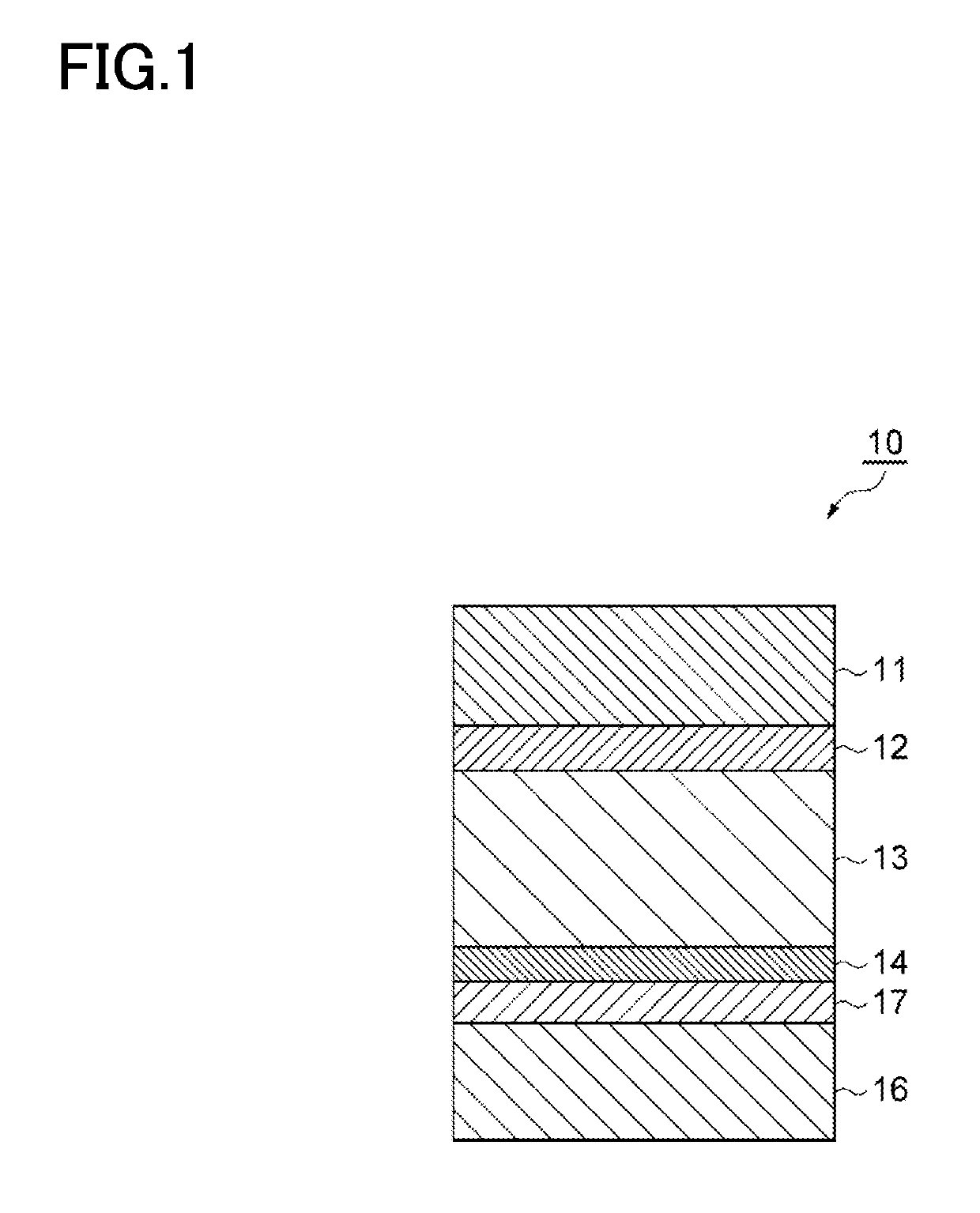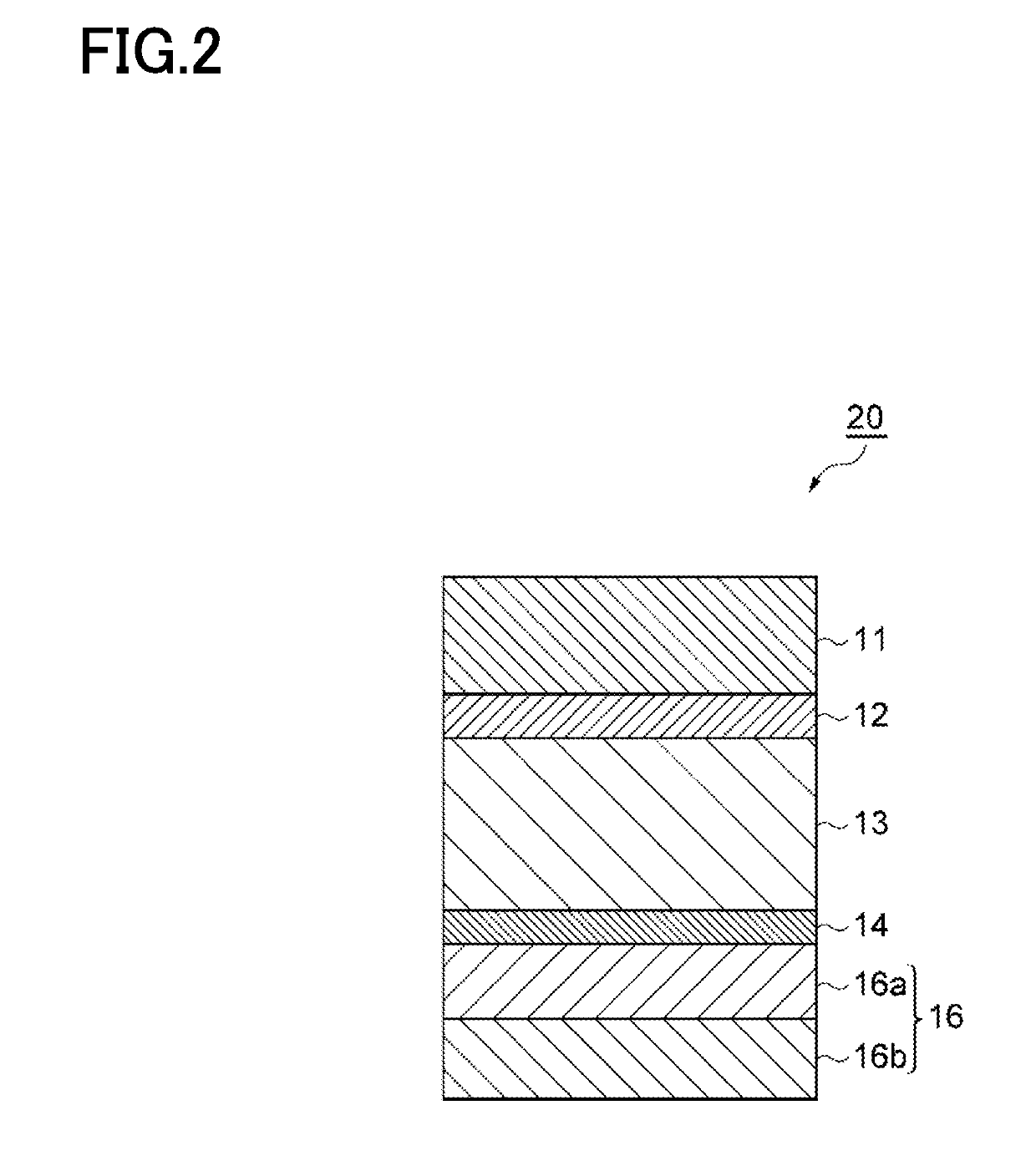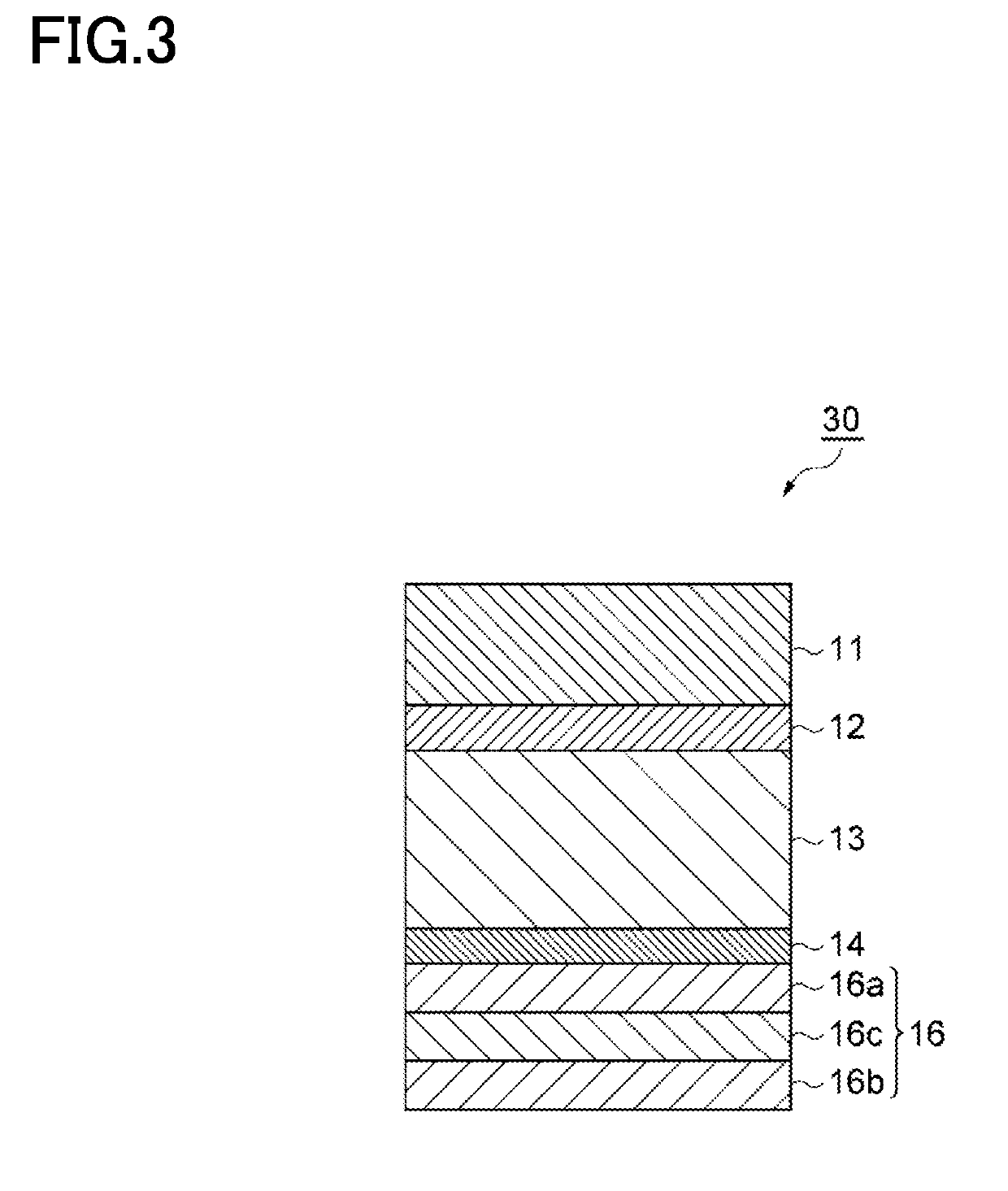Power storage device packaging material
a technology of storage devices and packaging materials, which is applied in the direction of packaging, domestic packaging, synthetic resin layered products, etc., can solve the problems of fine cracks that may more easily develop in the sealant layer, and achieve the improvement of properties necessary for packaging materials, the effect of further reducing or preventing the deterioration of insulation properties after degassing heat sealing
- Summary
- Abstract
- Description
- Claims
- Application Information
AI Technical Summary
Benefits of technology
Problems solved by technology
Method used
Image
Examples
example 1
[0268]First, the first and second anticorrosion treatment layers were provided on the metal foil layer through the following procedure. That is, (CL-1) was applied to both surfaces of the metal foil layer by micro gravure coating at a dry coating weight of 70 mg / m2, followed by baking at 200° C. in a drying unit. Next, (CL-2) was applied to the obtained layer by micro gravure coating at a dry coating weight of 20 mg / m2, thereby forming a composite layer of (CL-1) and (CL-2) as first and second anticorrosion treatment layers. The composite layer developed corrosion prevention performance by compounding two materials (CL-1) and (CL-2).
[0269]Next, the first anticorrosion treatment layer side of the metal foil layer provided with the first and second anticorrosion treatment layers was dry-laminated to a substrate layer using a polyurethane-based adhesive (first adhesive layer). The resultant laminate was loaded on an unwinding unit of an extrusion laminator and coextrusion was conducted...
example 2
[0271]A packaging material of Example 2 was prepared in the same manner as in Example 1 except that the content of the branched polymer A in the AL side layer (sealant layer 16a) was 3 mass % relative to the total mass of the AL side layer (sealant layer 16a). In the present example, the AL side layer (sealant layer 16a) was the propylene-based branched polymer-containing layer.
example 3
[0272]A packaging material of Example 3 was prepared in the same manner as in Example 1 except that the content of the branched polymer A in the AL side layer (sealant layer 16a) was 10 mass % relative to the total mass of the AL side layer (sealant layer 16a). In the present example, the AL side layer (sealant layer 16a) was the propylene-based branched polymer-containing layer.
PUM
| Property | Measurement | Unit |
|---|---|---|
| thickness | aaaaa | aaaaa |
| thickness | aaaaa | aaaaa |
| thickness | aaaaa | aaaaa |
Abstract
Description
Claims
Application Information
 Login to View More
Login to View More - R&D
- Intellectual Property
- Life Sciences
- Materials
- Tech Scout
- Unparalleled Data Quality
- Higher Quality Content
- 60% Fewer Hallucinations
Browse by: Latest US Patents, China's latest patents, Technical Efficacy Thesaurus, Application Domain, Technology Topic, Popular Technical Reports.
© 2025 PatSnap. All rights reserved.Legal|Privacy policy|Modern Slavery Act Transparency Statement|Sitemap|About US| Contact US: help@patsnap.com



